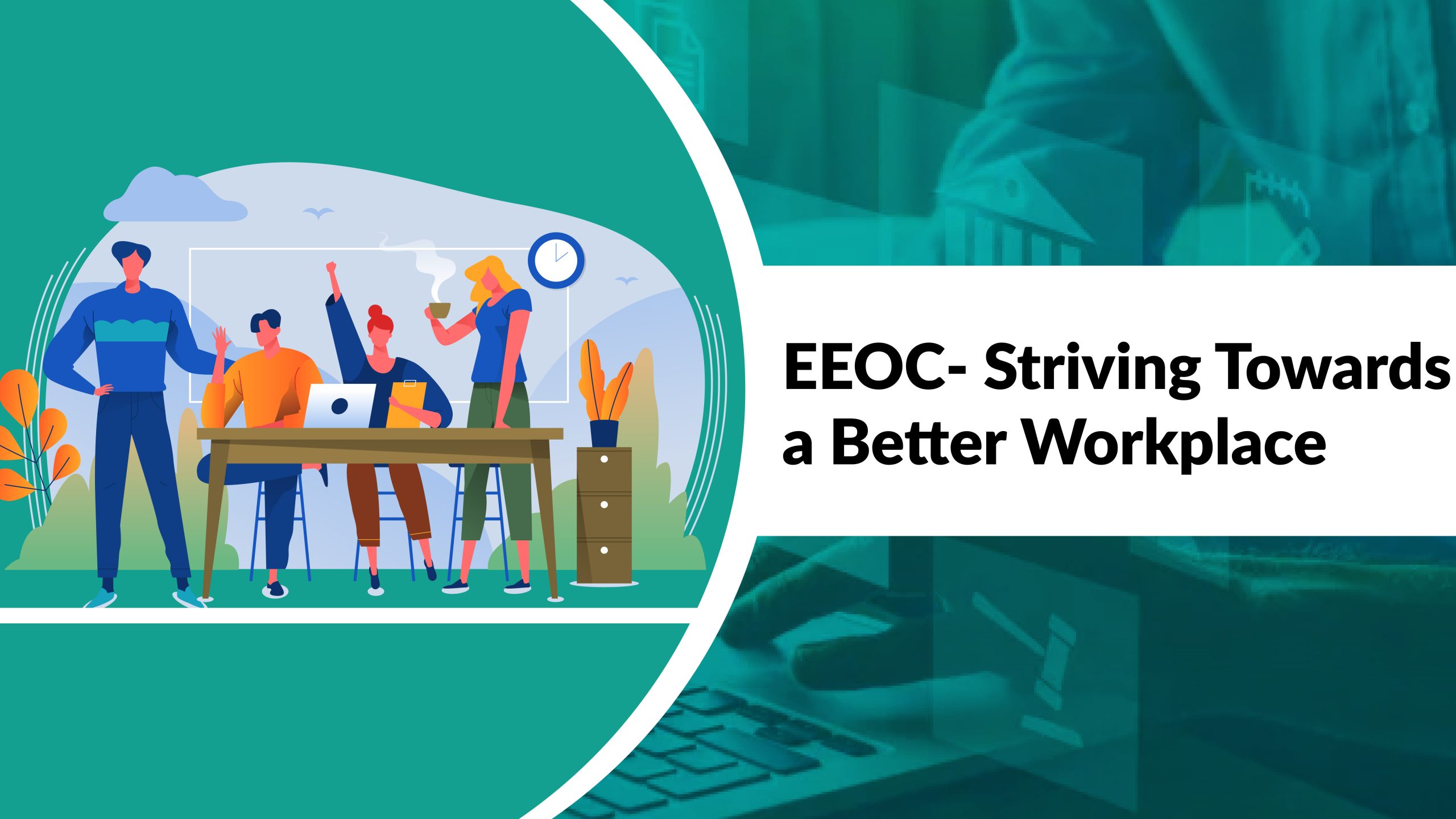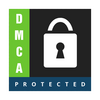
A country functions on a foundation of moderation to monitor and manage the functioning of major sectors. Governments work for the people and are run by the people. Multiple ministerial departments have been established over the years to look after entitled spectrums precisely. These departments and schemes are targeted to work for civilian welfare. In this blog, we will discover what exactly EEOC is and works for, for whom, why, and how. Considering the idea of eliminating workplace biases and promoting equity, EEOC steps in.
The US Equal Employment Opportunity Commission (EEOC) was established to monitor and regulate whether any eligible or potential candidate applying for a job profile is being held for the process of hiring and selection without Discrimination (based on age, gender, race, sexual orientation, national origin, disability or genetic information, and pregnancy status). In addition, this commission works for the progression of employees and safeguards them from any equitable treatment.
The EEOC’s vision is to create a respectful and inclusive work environment of equal employment opportunities for all. EEOC’s mission is to aggregate lately prevent and suggest remedial measures to cope with unlawful employment discrimination and provide everybody with equal employment opportunities for all in the workplace. The Equal Employment Commission covers employers with at least 15 employees and 20 employees in case of age discrimination. EEOC also includes labor unions and employment agencies located in federal territorial parameters.
ADA directs these vast definitions of disability under EEOC. EEOC defines disability as when an individual deals with a physical or mental condition that limits a major life activity synch as normal activities like walking, seeing, talking, or bodily functions like circulatory and endocrine functions. An individual who has a history of disability would also be counted in disability-recognized strata. Or when an individual is dealing with a medical condition that does not need to be long-term, permanent, or severe to limit the scope of participation or performance substantially. Considering this definition of disability, if an employee or worker is ill-treated at work then EEOC can intervene by referring to Title I of the ADA. Also, if symptoms come and go, what matters is how limiting the impact of symptoms is when they are active. And lastly, when an individual is subjected to adverse employment due to the physical or mental impairment has or is perceived to have, except if it’s transitory or minor.
Purpose of EEOC
US EEOC was established to suggest corrective measures and inclusive guidelines for employees working at organizations located in the territorial area of the United States. EEOC is a federal suggestion that is expected to have been opted for by every federal state and their parameters of compliance could vary at prominent levels.
The purpose of the EEOC is to establish a system of formulation which lacks any scope of biases or Discrimination against the job applicant or employees. Such a system is fledged with rules, regulations, limits, and consequences in case of discrepancies. This committee detects such cases of Discrimination and acts into it as a custodian working body. EEOC nullifies the chances of Discrimination against any job applicant or employee due to the enforcement of federal laws. The grounds of Discrimination could be based on gender, race, religion, age, marital status, pregnancy status, or any medical information. As a part of their job, EEOC administers federal suggested laws, holds hearings, conducts investigations, takes complaints, and sometimes acts as a mediatory body to levy a settlement between the employer and the employee.
How does the EEOC prevent Discrimination?
EEOC monitors intervene and pave regulations that every federal, state, local or private corporation is expected to stay compliant with. Or corporations located in the national territory are also accounted to remain compliant with EEOC regulations. As per the monitoring role, EEOC ensures that every accounted or targeted corporation, irrespective of its scale, is compliant with suggested regulations or not. As per the intervention role, EEOC intervenes or acts legally against corporations or managing bodies accountable for non-compliance with EEOC. Finally, and primarily, it paves a precise set of rules and regulations to eliminate or diminish the practice of harassment and Discrimination in a workplace setting.
Employee’s rights under EEOC and Employer’s responsibility under EEOC
Employees and employers are the primary stakeholders of EEOC. Accordingly, the commission solely safeguards employees from Discrimination and harassment in a workplace setting and recommends a mandatory set of rules and regulations for employers and managerial bodies.
- Firstly, it is the employers/employees who should hold responsible for maintaining the sane decorum of the workplace and paving and practicing non-discriminatory measures to keep the workplace environment free of any prejudice and discrimination in the workplace
- Employers/employees are expected to report any discrimination occurring in the workplace to their concerned employers or managerial bodies without expecting any consequences that would affect the employee workforce. Also, an employee can request a workplace change or reasonable accommodation concerning their disability situation or religion.
- And the corporation has to maintain a privileged status with employees’ medical data. And disclosure of an employee’s medical information from the employer’s end would lead to legal prohibitions.
- EEOC prohibits any discrimination and harassment of employees who are forty or above in age. Laws mandated by EEOC safeguard employees from being discriminated against based on their age.
A set of responsibilities to stay compliant with EEOC are mentioned below:
- As an employee/employer, an individual has to feel responsible at a sole level to maintain decorum at an individual level and keep the environment as professional and cordial as possible. That particular individual should live up to the schedule of not discriminating or harassing any colleague or worker, reporting such incidents to the concerned bodies, and suggesting preventable or improvising measures to improve the quality of the workplace environment.
- Managerial roles are the basic authorities who would be sought when EEOC intervenes. It is the manager’s role to monitor the decorum of the workplace environment and intervene at their level in possible situations. Yet it is the manager’s responsibility not to tolerate discrimination in their territory and not treat employees in a discriminatory manner.
What’s New in 2024?
According to the US EEOC, the purpose of collecting the data is to support enforcement actions, facilitate research on employment patterns, and encourage self-assessment by employers. The EEO-1 report provides the EEOC with data about the size, location, race or ethnicity, and gender demographics of an employer’s workforce. US EEOC formulates form EEO-1. The EEOC has announced that the long-delayed 2023 EEO-1 reporting period will finally open on April 30, 2024. The EEOC will post updated information concerning the 2023 EEO-1 data collection on the agency’s website as it becomes available.
Strategic Enforcement Plan (SEP) is a US EEOC US-introduced four-year plan designed to focus EEOC efforts on specific priorities underlying principles to develop the plan:
- The EEOC reinforced its commitment to a “strategic approach to enforcement,” including via the benefit of commissioner charges and executed investigations.
- The EEOC acknowledged its duty to collaborate with other federal agencies, including the U.S. Department of Justice and the U.S. Department of Labor.
- The EEOC identified the significance of public accountability through “timely, consistent, and high-quality service to the public.”
Given that the SEP is based on public transparency and enforcement, and given that the EEOC increased its ADA litigation by more than 70% in the most recent fiscal year, companies should expect increased agency scrutiny of their disability policies and processes over the next four years. They should think about providing their managers, supervisors, and staff with appropriate training. Notably, the EEOC chose to sue companies of different sizes, emphasizing that smaller businesses are nonetheless subject to EEOC investigation. In 2024, employers of all sizes and in all sectors may want to think about evaluating their record-keeping procedures to make sure medical documents are kept apart, as well as checking their policies and training materials to ensure compliance.



